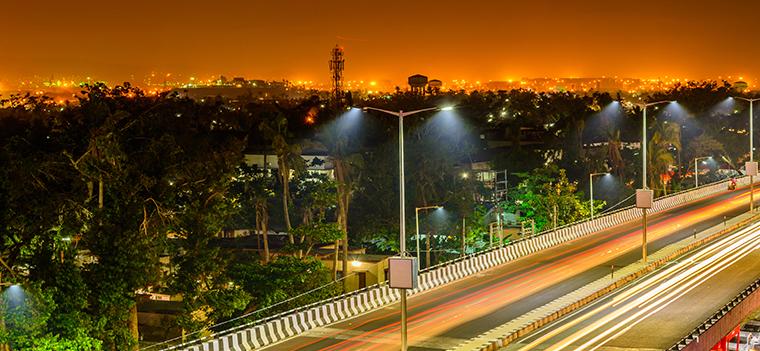News
- India’s energy goals and climate change commitments will require significant energy efficiency improvements.
- A new World Bank Group project will help India’s Energy Efficiency Services Limited (EESL) scale up deployment of energy efficient LED lightbulbs, tube lights, ceiling fans, and street lights.
- ESMAP analysis and technical assistance contributed to the design of the project that will help the government transform the energy efficiency market through sustainable business models, capacity building, and by maximizing finance for development.
Photo Credit: Thinkstock
The World Bank Group (WBG) recently approved a $220 million Program for Results (PforR) loan and an $80 million International Bank for Reconstruction and Development (IBRD) guarantee for the India Energy Efficiency Scale-up Program to help expand energy efficiency in the residential and public sectors. It will also strengthen the capacity of India’s Energy Efficiency Services Limited (EESL) and enhance its access to commercial financing.
India’s climate change commitments to reduce carbon intensity by 33–35% by 2030 will require significant energy efficiency improvements. The investments under the project are expected to avoid lifetime greenhouse gas emissions of 170 million tons of CO2 and contribute to avoiding an estimated 10 GW of additional generation capacity. These reductions would be over 50% of the target of 19.6 GW indicated in India’s Nationally Determined Contributions (NDCs) under the Paris Accord.
Demand for electrical appliances and equipment such as lighting, ceiling fans, air conditioners, refrigerators, agricultural pumps, and industrial motors is projected to grow significantly in India and is expected to be one of the key drivers of electricity demand growth. There is a significant untapped energy efficiency potential in the residential and public sectors in India; EESL aims to implement an ambitious program in these segments to overcome prevailing market failures and other barriers.
“This energy efficiency Program for Results will help India meet its NDC commitments and move further towards a more resource-efficient growth path,” said Junaid Ahmad, World Bank Country Director in India. “The additional guarantee from the World Bank will support EESL to access new sources of commercial funding, diversify its investor base, and establish a track record for future access to financial markets,” he added.
The WBG project will create sustainable markets for light emitting diode (LED) lights and energy efficient ceiling fans; facilitate scalable investments in public street lighting; develop sustainable business models for emerging market segments such as super-efficient air conditioning and agricultural water pumping systems; and strengthen the institutional capacity of EESL. Moreover, it will help to increase private sector participation in energy efficiency, including through private sector energy service companies. Under the project, EESL will deploy 219 million LED bulbs and tube lights, 5.8 million ceiling fans, and 7.2 million street lights, which will be supplied by private sector manufacturers and suppliers along the lighting value chain.
The project’s PforR model uses a country’s own institutions and processes, and links disbursement of funds directly to the achievement of specific program results. This approach is complemented by an $80 million IBDR guarantee – the first in India – to support EESL in accessing further commercial finance by partially covering re-payment risks to commercial lenders or investors. Access to new sources of commercial financing, markets, and investors, will allow EESL to implement its ambitious program.
The project is the first WBG operation combining a PforR loan with the guarantee instrument, key components for maximizing finance for development. It is also the first IBRD guarantee in India. The complexity and innovation under this hybrid project model required targeted analysis and technical assistance to help lay the groundwork for its design.
ESMAP funds contributed to in-depth technical and institutional assessments that provided critical input to the design of the PforR loan, which is disbursed based on achievements and verification of specific results indicators. ESMAP also provided technical support for the design of PforR’s results framework and action plan, key elements for strengthening and measuring its success, as well as for the disbursement of the loan.
Given its ambitious energy efficiency program, EESL needed specific and timely technical advice on an array of topics to tackle specific challenges. ESMAP funding enabled the WBG team to respond quickly to EESL’s technical queries regarding high-efficiency air conditioning, water pumping, and exploration of options for development of EESL initiatives in the emerging electric vehicles market.
To ensure coordination of efforts, ESMAP funding was used to map existing and planned government and donor initiatives focusing on energy efficiency. To scope strategic areas for future engagements in India, ESMAP funds also helped to set up a multi-sectoral working group to identify opportunities and share knowledge on several technical issues relevant to India’s and EESL’s ambitions and experience with energy efficiency.
